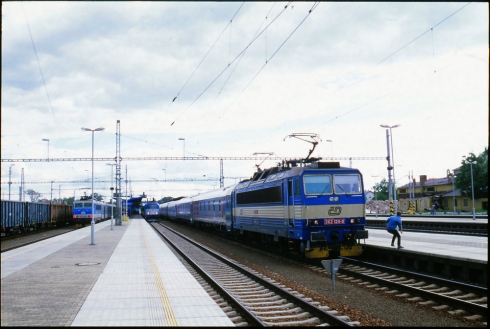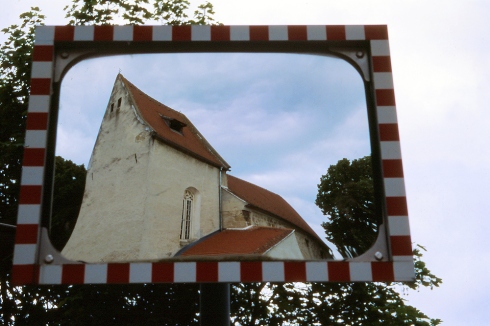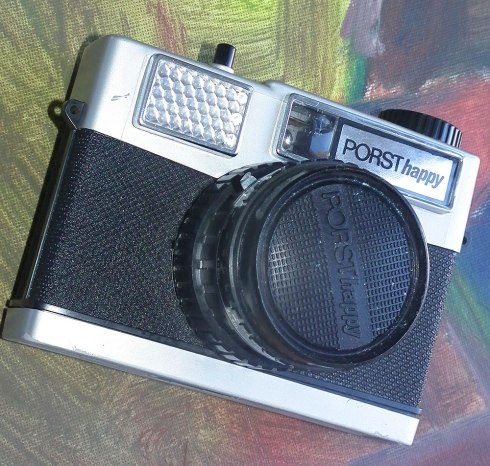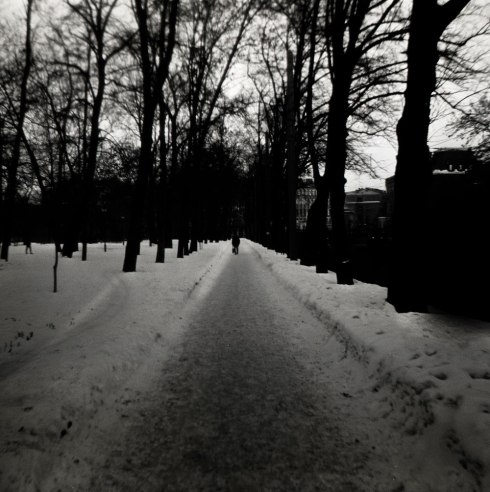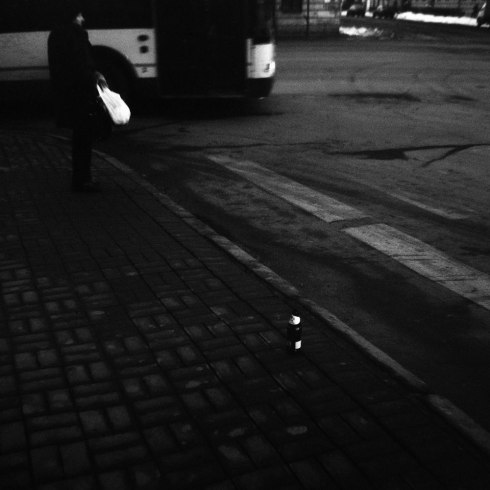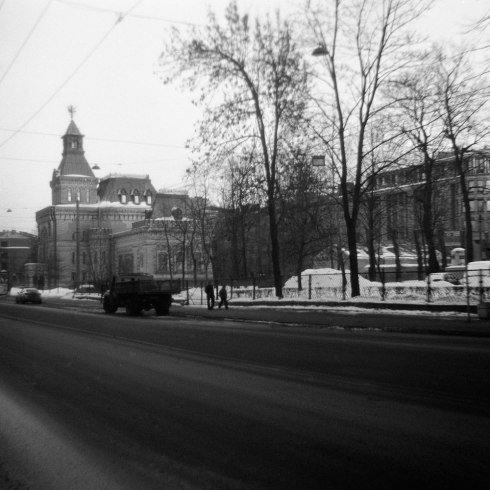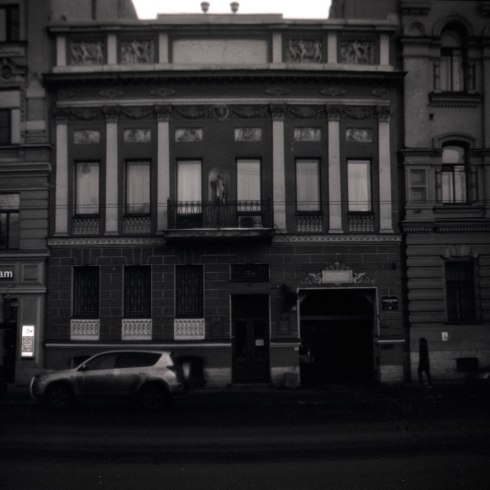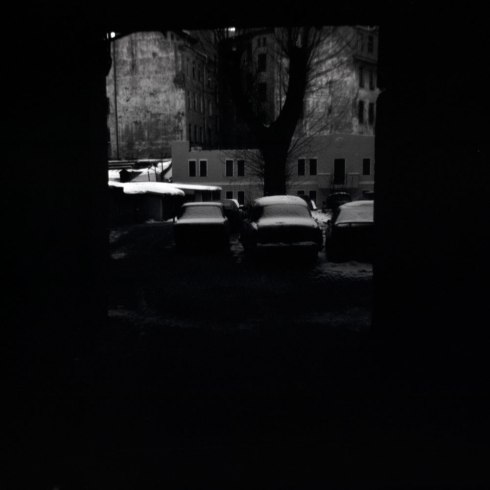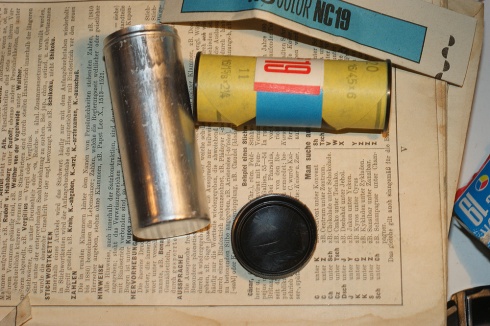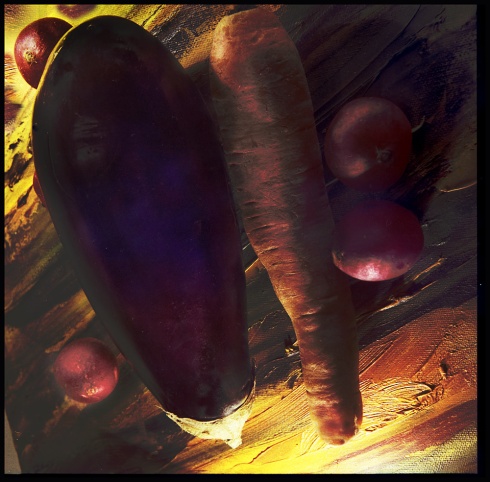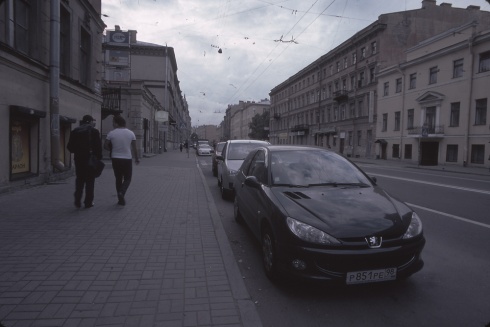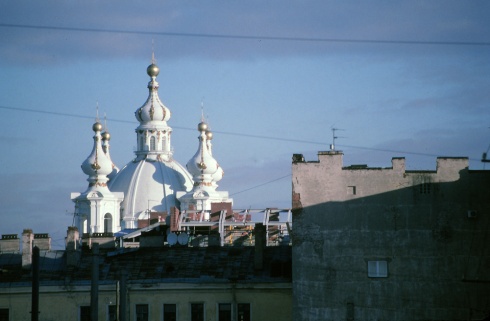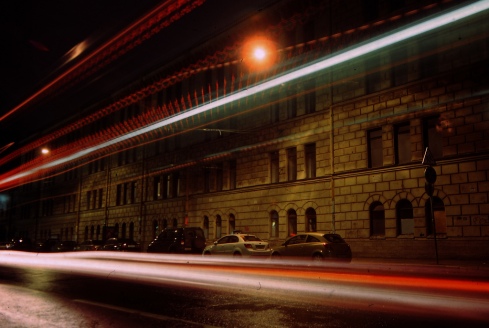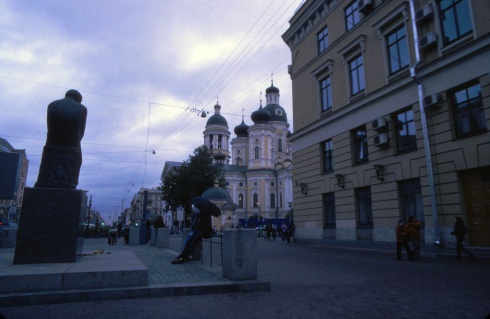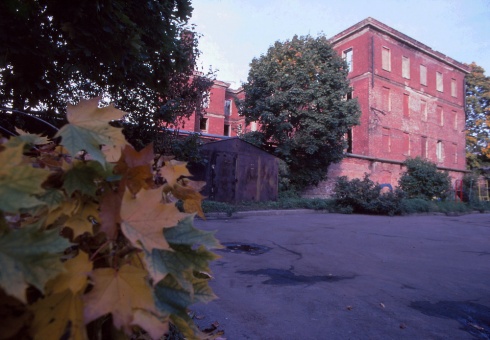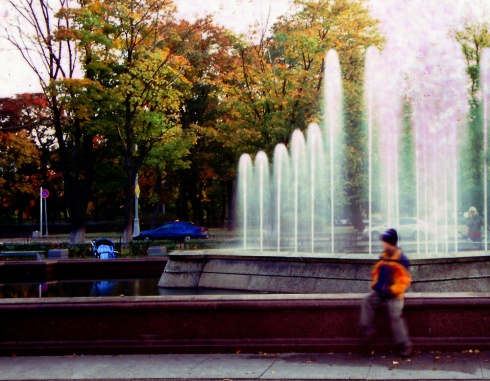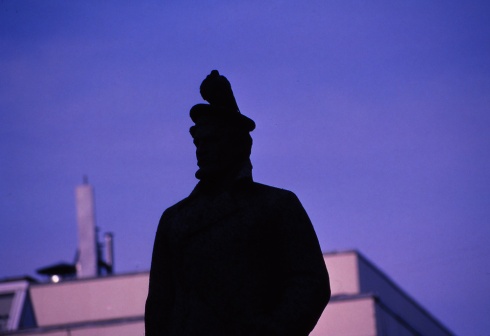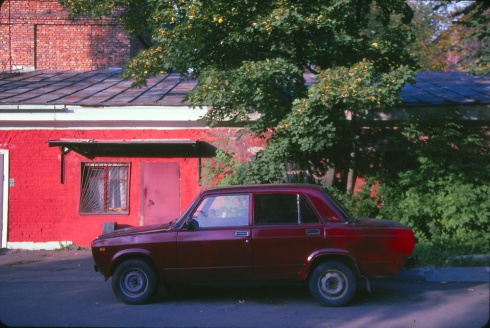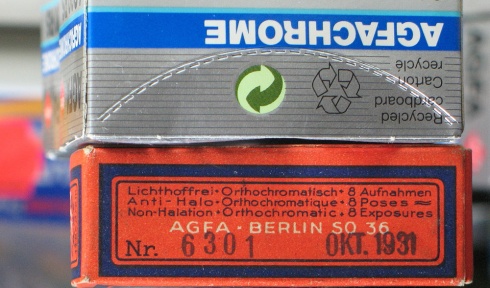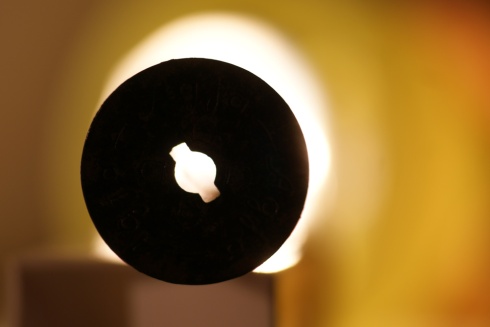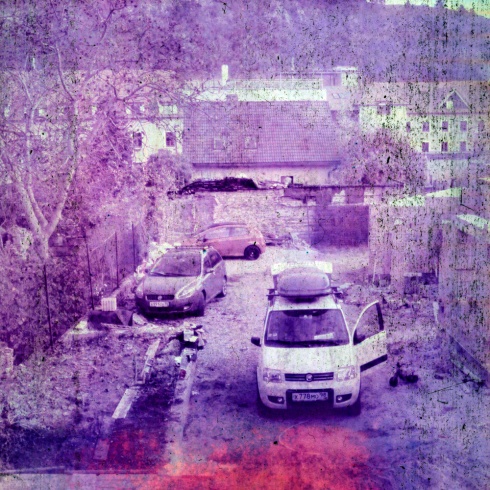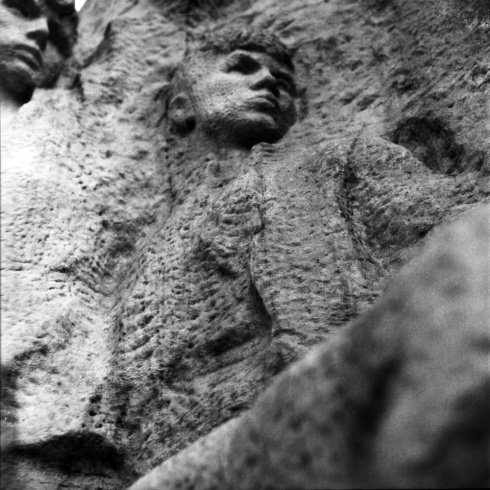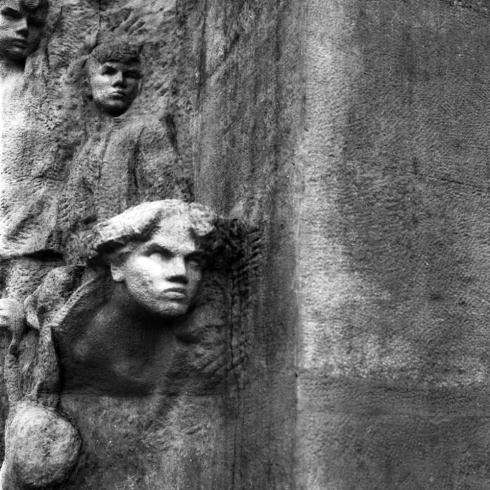Sorry the photography photoroobit blog has migrated to its own domain and is now at www.photoroobit.com
Resurrection. Not quite. A home for digital snapshots.
7 FebWell, this blog has been dormant for a while and its’ resurrection is unlikely. The reason why is because I am interested in different aspects of photography, from collecting photographic formulas (anyone can hop on board with that endeavor) to taking digital snapshots of people of things, from archaic photo processes to traditional analog dark room stuff.
Having all this in one place is too much. So I am launching a few separate blogs, which I hope won’t go dormant any time soon.
The first one is my digital photo stream, yes amazingly enough I secured the domain – digitalphotostream.com (if anyone wants to join me there are create a communal digital photo stream, I’d be more than happy to change the profile or to redesign the site or even make a site independent from the wordpress platform.
So here is the first post.
Retinette 1b and Porst Happy
20 MarTwo more articles added to the Photo Encyclopedia
and
a piece on Porst Happy, a wonderful Diana clone
Porst Happy is a genuine early Diana camera, distributed by Porst, a German distributor of camera equipment and photographic suppliers, a mail order house and a retailer that operated from 1919 to 1996.
A guilt-free sort of photographic experience albeit somewhat expensive for most people due to outrageous costs of new 120 format film (in most places). I put it up for sale on Ebay, but if it won’t sell then that won’t be a big deal: I’ll just keep the toy for occasional (and intentional) wastage of film.
Porst Happy is a conventional early model Diana camera, branded Porst for distribution in Germany. The camera allegedly dates from the year 1953, but I believe that to be an error, and the camera dates from 1963, it has synchro contact and a flash hotshoe.
1/50 seconds – all plastic Film used 120 Focusing with a distance scale 1.2 meters to infinity Focusing scale is in meters and feet Three apertures (symbol settings of sunny, cloudy, very cloudy, I assume the equivalents of 16, 12, and 8) The camera is suitable for taking multiple exposures.
ORWOCOLOR NC 19 – a historic test of a historical film
26 JanORWOCOLOR
Orwocolor was made by ORWO at Wolfen in Germany (in the part that was free of American imperialism and Nazism) and is related to Orwochrom and original Agfacolor which was also developed at Wolfen. Wolfen, now a place abandoned and more or less vandalized. I think that destruction of ORWO after Anschlüß was deliberate. Ironically ORWO might have outlived Agfa in film format.
I ran a field “test” on ORWOchrom already and in it I wrote about the origins of this color process.
Below are scans from a roll of Absolutely no post processing was done on the first three. No curves tweaking. No colors added. No burn or dodge. Just actual scan with no processing. This is how it came out. I would assume that’s how it would print in a lab. I have all those images in my flickr stream but I deleted the vegetable supernova (the last photo) because it is so dissonant.
Scanned as Agfa Optima (Agfa being closest relative and of course the scanner does not have an option for Orwocolor).
German Orwocolor NC19 is a negative film. Although ORWO made C-41 film in the 135 format before it was destroyed by the enemy the NC19 ctually uses old Agfa and own ORWO technology (I mixed the chemicals and developed the film according to ORWO’s formula). This film was made in 1987 or 1988 and expired in 1991 (that’s the expiration date).
The film was amazing, it is astounding film – and it is easy and forgiving to use, has enormous latitude and apparently – if this picture can serve as evidence.
Three Apples. I’ll be posting a few more stills – I shot only one roll of this fabulous film.
The actual scan is 84 mb, and the detail is just dramatic. These are tiny scans for the web (click on the image to see it larger but they are still very small).
ORWO Orwocolor NC 19
Chinese close-up lens 1 to 2
Rollei SLX
self-made chemical solutions (raw chemicals bought from Calbe Chemie, in its past an ORWO enterprise).
Results above
A little hooliganism with Orwocolor, vegetable are rioting
or Vegetable supernova. I might delete it later.
A failed film test: Agfa Isopan (Agfa Super Special Film) from probably 1930s.
1 DecHow a roll of Agfa Isopan got butchered.
Film: Agfa Isopan Super Special Film (SSP)
Year of manufacture – estimated middle to late 1930s.
Format – 620 – metal spool, got a bit corroded at the ends though the film is perfect.
Why did I murder a roll of innocent film? Because I did not believe in this film’s innocence. Here is a short though illustrated story.
I do have some very old Agfa stock from the 1930s, like this one and I am not crazy enough to stick it into developer. I would be happy to put one through a camera if I got a dozen of those photographic mummies but otherwise no, wasting
one seems like an incredible folly. A film that was exposed however is a different story altogether, only because it might, just might, tell a story and leaving it unprocessed would be a sin. One of traditional, real photography’s real attraction, its absolute magic as opposed to the digital stuff, is that the image is latent, it is there preserved for posterity but is invisible and inaccessible to ordinary mortals. It can be brought to life at some in the future – perhaps years after its birth. This is a magic trait of photography that I find profound, moving and disturbing all the same time.
In this case I got a roll of Agfa Super Special 620 film probably from the 1930s – judging by the spool and old Agfa inscription on it that was used in the 1920s and early 30s. I did not look at it too carefully – it looked like something good that could as well contain a mystery. It came from England (I bought it for 2 euros), it was German, it was probably used around or during Second World War. I must develop it.
Now, the problem with the film was that it was unexposed. Not for an instant did that possibility occur to me because all the ancient “unused” film I encountered before came in original packaging complete with the wrapper or aluminum canister. This roll of Isopan came naked, no wrapper, no box, no nothing, and to confuse me further there was a rubber band died around its waist and remnants of adhesive tape glued to the red skin of its backing paper. Later upon a more careful examination I realized that it wasn’t adhesive tape after all but a piece of original foil-like wrapper that became embedded in the surface of the backing paper.
I loaded the film into the Paterson tank in the darkness of my bathroom, brought it into the kitchen, and to give it a presoak I filled the tank with fresh tap water. As I prepared to mix the developer – I thought of giving it a bath of Rodinal diluted 1 to 25, a sudden thought occurred to me – may be there was something wrong with my project. I should double check I went back to the bathroom to check the backing paper I left there on the table next to the sink after having skinned the roll. Here it was. I looked at it for a few seconds and mixture of anger at my own stupid self and self pity overcame me. The film was never exposed. It was a virgin. The “exposed” sticker was right there at the end of the roll, it was pristine new because it never saw the light since the moment it left Agfa factory in the 1930s.
Needless to say that I did not develop the film.
It is still in the developing tank.
I poured the water off. It came out emerald green washing off the ancient anti-halo layer from Agfa’s emulsion backing.
I have no idea what to do with it now? Feed it to the animals? Keep it until it dries up in a month or two time and then should I try to reattach to the backing paper? It won’t be same film. The antihalo layer is now gone.
Perhaps it wasn’t even murder.
Manslaughter. Or filmslaughter. I slaughtered an innocent film because I thought it was not innocent and had a mystery to reveal while it hadn’t any and so has apparently died for nothing.
Film test: Свема ЦО-32д – Svema CO-32D from the year 1986
20 NovColor or Colour Reversal or Reversible Film
DIN 16 / ISO 32
Made in Russia (Soviet Union) by Svema
Estimated year of manufacture 1986
Expired 1990
Used in 2011
Camera used – Rollei SLX

Old Russian Svema CO-32D color reversible film that was manufactured per old prewar Agfacolor process
ЦО-32Д or CO-32D
Nowadays would probably be transliterated into English by most people semi-phonetically in the as TsO-32D though it stands CO-32D right there on the box.
CO is an abbreviation that means (in Russian) Color Reversible (Film), 32 is the film’s speed according to GOST (which is same ASA or ISO) and the letter D at the end denotes in Russian (abbreviation) as it would in English D means here means ” daylight”.
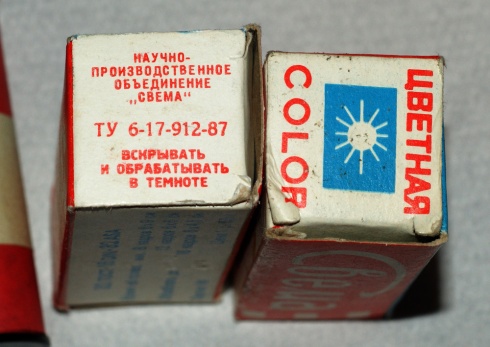
Old Russian Svema CO-32D color reversible film that was manufactured per old prewar Agfacolor process
So basically it is color reversible daylight film, 32 ISO film. If the name were to be translated as opposed to being transliterated into English, then it would be CR-32D or CRF-32D. Creativity in approach to naming products was not the Soviet’s strongest point.
The film was made in 1986. Because it expired in 1990 and the ЦО-32Д (TsO-32D) film was discontinued in early 1987, I assume it could only be made in 1985.
The film was baked in some window because the colors faded quite a bit and was tossed around because the state of the packaging is far from pristine. Also the film was not packed in an individual canister – either made plastic like in cheapo countries or in beautiful aluminum canisters that ORWO / Orwochrom films used to come in. The roll of film was just wrapped in a piece of waxed foil-like paper, 1930s style.

sacrificial lambs - old Svema CO-32d /TsO-32d, Orwochrom UT-18 in two flavors and an Orwochrom UK-17
I bought the film on Ebay though I don’t remember how much did I pay for.
The film is dead for the purposes of practical photography though was quite usable when it was new. That alone is amazing because if you were to read through numerous Russian photography forums the impression you would get is that Soviet color film was useless.
There are quite a few though not many examples of old photos from the Soviet Union taken on the Svema CO-32d film stock. http://images.yandex.ru/yandsearch?text=%D0%A6%D0%9E-32%D0%B4
What is this film? It is original Agfacolor slide film from the year 1936 with improved dyes. Soviet CO-1 (ЦО-1) film was the real Agfacolor and I would like to get my hands on one of those, better on a batch.
I bought my CO-32d – six rolls I think – through Ebay from a place like Bulgaria.
The test
I used two rolls for test though sadly I killed one during development – I promise it won’t happen again. Instead of second developer I put the film into the bleach. Amazingly the image did not disappear in an instant but during fixing stage the pictures were gone. There is perhaps a way to restore them, pull them out of there, chemically and that will be another, a different project altogether.
Exposure – I exposed originally ISO 32 film as ISO 12 which was apparently not enough. Now I think that ISO 6 would have been more appropriate.
Loading the developing tank. When I was loading the film into the tank I discovered that the backing paper grew into the film. It merged with it. The place where the film was stored all those years (shop window?) must have been pretty hot for the film and the backing paper to bake together. I had to wash the backing paper off the film. Not everything came out.
Developing. I mixed all chemicals myself according to the ORWO 9165C procedure which is used for Orwochrom (Orwochrome) processing except three major or minor elements.
The first or the so-called black and white developer. Soviet GOST (Svema and Tasma color reversible films) prescribes first developer with Amidol. This was probably the original Agfacolor developer. Because I haven’t found Amidol so far I had to skip that and replace the chemical with something else. Now the ORWO 9165C process asks for a combination of phenidone and hydroquinone – I did not find phenidone either. Instead I used a developer from Bohemian Foma cookbook, originally Agfacolor 67 prescribed for Fomachrom film stock.
Here is the “recipe”
Metol 3,0 g
Sodium sulfate, dehydrated 50.0 g
Hydroquinone 6,0 g
Sodium carbonate (CAS 497-19-8) 40,0 g (I used baking soda)
Potassium thiocyanate (CAS No: 333-20-0) 2 g
Potassium bromide (CAS 7758-02-3). 2 g
Potassium Iodide (CAS No.7681-11-0( 0.1% solution 6 ml
I skipped the potassium iodide part for the reason that I don’t have it either.
That means that developed the Russian Svema CO-32d according to German ORWO reversible film process but for the first developer used one from Czech Foma (stolen Agfacolor) without one ingredient. Potassium iodide is a fogging reducing agent and could be replaced with a pinch of benzotriazole but I did not bother.
The second short cut the was stop bath which I made from regular vinegar and tap water as opposed to a mixure of 99% ethanoic acid, sodium acetate and water. Vinegar and water dressing works as well.
Besides these two the entire process was more or less according to the sacred book of Orwo.
I developed five rolls of film altogether (two Svema CO-32d and three test rolls of ORWO reversible films – an ancient Orwochrom UT-18, an even more ancient ORWO UT-18 and an Orwochrom UK-17 (test reports are coming later).
A hint on developing Orwochrom, Fomachrom, Soviet / Russian Tasma and Svema CO films as well as similar oddities that I never encountered but would love to get my hands on like Sakurachrome, Ferraniachrome, Revuechrome, Anscochrome, which all use Hitlerite Agfacolor technology. I will develop those films in batches of 10 because 1 liter is the minimum quantity of ready chemical solutions I would make or I can weigh and pre-mix chemicals at the price or rather cost of about 15 euros plus shipping for 1 liter solution mix that would include everything except stop bath (get your vinegar at a local grocery store). I would develop 1 roll of such film free of charge but you’d have to wait until there is a batch ready – I’d reckon the next Orwochrom-Agfacolor cookout will take place in about three months time.
“Raw” chemicals. I bought mine from the good people at the Calbe Chemie (http://www.calbe-chemie.de) in Germany which also used to make ORWO processing kits. Their minimum quantity is normally 1 kilo of stuff which is obviously a lot unless you plan on testing and developing Agfacolor-like films like I do.
The summary here though not quite yet the verdict. When it was fresh the Svema CO-32d like the ORWO UT and UK products was a forgiving, usable film that had soft watercolor sort of quality. If one is fortunate enough to get hold of a refrigerated or at least unbaked batch today then he or she will come into a possession of a veritable treasure – Svema CO films produce is capable of producing unusual painterly effects and is easy to handle and process.
St. Petersburg – Youth in Defense of Leningrad Monument
20 NovBecause I am writing a guide to St. Petersburg and am taking pictures of what I am writing about, I get both new pictures and the text to accompany them. I am not going to dig through my old stuff but would occasionally, from time to time, not too frequently, post fresh scans of images taken in St. Petersburg.
That’s the introduction and below is the first entry:
Youth in Defense of Leningrad, also and originally named to Heroic Young Pioneers monument, erected in 1962, officially dedicated to children who fought in defense of Leningrad and in the Leningrad region during the Siege of 1941-1944 against the predecessors of today’s Nato, the Nazis and their willing allies, but in a wider contents as it is narrated now the monument was created in the memory of the children of all ages who died during the siege (though I find that later claim does not jibe well with the monument’s heroic pathos).
The monument design was selected out of over two dozen proposals submitted for a public competition in 1958. The winners, artists Ivan Kostjuchin (Kostiukhin), born 1927 and Sergei Novikov, born 1929 were in their early teens at the time when the NATO predecessors invaded Russia and by today’s standards were extraordinary young sculptors to be awarded a public art commission – Sergei Novikov was just 29. The architect overseeing the project, Alexander Alymov (1923-1998), who was just 15 at the time of the war, and volunteered to the army as a teenager, could also relate to the monument in a way few people of the (pretty rotten) postwar generation could. Unlike Soviet era nowadays practically nothing gets created in the way of public art and people in their late twenties or early thirties would never get a public art commission.
Location: St. Petersburg, Tauride Gardens or Taurian Gardens (public park built between 1783 and 1789, once estate of Gregory (Grigori) Potemkin.
Shanghai GP3 100 black and white film
Rodinal developer
Pentacon Six
Saint Petersburg, Sankt-Peterburg, Санкт-Петербург
